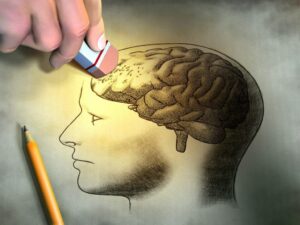Do you know someone who’s always checking their locks, making sure the windows are locked, and even counting the number of steps they take in a day? Or do you have obsessive-compulsive tendencies that creep up on you from time to time? If so, you may be suffering from malevolence OCD, or All About OCD for short. This is an anxiety disorder that predominantly affects men, and it revolves around obsessions and compulsions. In this blog post, we will explore the basics of malevolence OCD and what you can do to cope with it. From diagnosis to treatment options, read on to learn everything you need to know about this enigmatic condition.
Contents
What is Malevolence OCD?

Malevolence OCD, also known as malignant OCD, is a type of obsessive-compulsive disorder that is characterized by intrusive, unwanted thoughts or images of harming others. It can be very serious and debilitating and can interfere with daily life. Many people with malignant OCD feel an intense desire to commit the act of harm even if they have no intention of doing so.
There is no one cause for malevolence OCD, but it most often occurs in people who have a history of severe emotional disturbance or trauma. The thoughts may stem from a traumatic experience in childhood or from something that happened to the person recently. People with malignant OCD may also have a higher-than-normal rate of anxiety disorders, depression, and bipolar disorder.
What Causes Malevolence OCD?
There isn’t one answer as to why people develop malevolence OCD. It could stem from something as simple as a traumatic experience in childhood or an adverse reaction to a medication. There’s no single cause for this condition, but it typically occurs in people who are distressed or have intense negative thoughts about themselves or others.
Some of the causes of malevolence OCD are thought to include :
Genetics
One of the main theories is that the disorder may be passed down from one generation to another through genetics. Researchers are still exploring this idea and trying to identify any potential genetic link. There are currently no known genes that are directly linked to this type of OCD
Brain Chemistry
Another possible cause could be an imbalance in the brain’s chemical makeup, such as serotonin levels. Serotonin is a neurotransmitter responsible for regulating mood and behavior. When levels of serotonin are low or disrupted, people may experience increased intrusive thoughts, obsessive behaviors, and anxiety.
Environmental Factors
There are also environmental factors that can contribute to the development of malevolence OCD. People who have experienced significant trauma or stress in their lives may be more likely to develop the disorder. Additionally, people who use drugs or alcohol may increase their risk of developing any kind of mental health disorder, including male
Childhood Abuse
Childhood abuse or neglect may also be a factor in the development of malevolence OCD. People who have experienced physical, emotional, or sexual abuse are more likely to develop anxiety disorders, including obsessive-compulsive disorder.
Symptoms of Malevolence OCD

Symptoms of Malevolence OCD can include recurrent thoughts or images of harming others, feeling a sense of dread or foreboding before an attack, and excessive concern with cleanliness and order. People with this form of OCD may also have trouble sleeping and experiencing strong emotions.
The hallmark symptom of malevolence OCD is the recurrent obsessive thought or image of harming another person. For some people, this can take the form of recurrent thoughts about committing murder or hurting someone physically. Others may worry about harming someone emotionally, through acts such as sabotage or cyber-bullying.
While any person can experience intrusive thoughts like these at some point in their life, people with malevolence OCD are particularly prone to them. This is likely because they see the harm as something inherently dangerous and harmful to others. As a result, they often feel a great sense of dread or foreboding before an attack, even if they have no intention of carrying out their threat.
Concern over cleanliness and order is also common among people with malevolence OCD. They may become obsessed with checking locks on doors and making sure that all surfaces are properly cleaned at all times. In extreme cases, sufferers may even keep firearms under lock and key to ensure that they are never tempted to use them inappropriately.
Treatments for Malevolence OCD

There are many treatments for malevolence OCD. Some of these treatments include:
Cognitive Behavioral Therapy
One of the most effective treatments for this disorder is cognitive behavioral therapy (CBT). In CBT, patients learn to identify and challenge their negative thoughts. They also work on replacing those thoughts with more positive ones. This can help them manage their symptoms, as well as reduce their stress levels.
Exposure and Response Prevention
Exposure and response prevention (ERP) involves gradually exposing the person to their fears and then teaching them how to respond to those fears without engaging in compulsive behaviors. For example, someone with malevolence OCD may be gradually exposed to thoughts of violence and taught how to resist the urge to act on those thoughts.
Medication
In some cases, medication can help reduce the symptoms of malevolence OCD. Antidepressants, such as selective serotonin reuptake inhibitors (SSRIs), can help regulate mood and reduce anxiety.
Some of the newer medications, such as antipsychotics and mood stabilizers, may also be used to help reduce symptoms of malevolence OCD. However, these should only be used with caution, as they can have a variety of side effects.
Support Groups
People with malevolence OCD need to have support from family, friends, or a professional therapist during the recovery process. Joining a support group for individuals with mental health issues can also provide valuable insight into the condition, as well as an opportunity to connect with others who may be going through the same struggles.
Alternative Therapies
In addition to the treatments mentioned above, several alternative therapies can help reduce symptoms of malevolence OCD. These include mindfulness-based stress reduction, hypnosis, and art therapy. Acupuncture is another option that may be beneficial in reducing anxiety levels associated with this disorder.
How To Prevent Malevolence OCD?
Preventing malevolence OCD is largely about recognizing the signs and symptoms early on, and seeking professional help when necessary. It is important to make sure that any feelings of intense fear or anxiety are addressed as soon as possible. This can help prevent the intrusive thoughts from escalating into full-blown OCD.
It is also beneficial to practice relaxation techniques such as meditation, yoga, or deep breathing to reduce stress levels and manage anxiety. Additionally, it is important to maintain a healthy lifestyle by getting enough sleep, eating nutritious meals, and engaging in physical activity regularly. Making these lifestyle changes can help keep malevolence OCD at bay.
Some of the tips for managing malevolence OCD also include :
Distract Yourself
One of the best ways to manage malevolence OCD is to distract yourself when you feel anxious. Doing something enjoyable, such as listening to music or playing a game can help take your mind off of your worries.
Replace Negative Thoughts With Positive Ones
When faced with intrusive thoughts related to malevolence OCD, it is important to try and reframe them in more positive terms. For example, instead of thinking “I could hurt someone if I get too angry”, think “I can learn how to manage my anger and not let it get out of control”.
Avoid Triggers
Certain activities, people, or places may trigger intrusive thoughts. It is important to be aware of these triggers and try to avoid them when possible. Additionally, it is beneficial to practice relaxation techniques whenever you feel overwhelmed by your thoughts or emotions.
Seek Professional Help
If the symptoms of malevolence OCD are getting worse over time or negatively affecting your life, it is important to seek professional help. A qualified mental health professional can provide guidance and support while helping you learn how to manage your condition effectively.
Conclusion
In this article, we will be discussing Malevolence OCD. This is an obsessive-compulsive disorder that affects men more often than women. People with this condition have a persistent and recurrent thought or image that they find extremely distressing. The thoughts may involve anything from violence to contamination to moral degradation. If you are struggling with malevolence OCD, or if you know someone who is, please take some time to read this article so that you can get a better understanding of what it is and how to deal with it.
For more information and guidance, please contact OCDMantra. OCD is a mental health disorder characterized by obsessions and compulsions. If you have any queries regarding OCD treatment, ERP therapy experienced therapists at OCDMantra can help: Book a trial OCD therapy session


